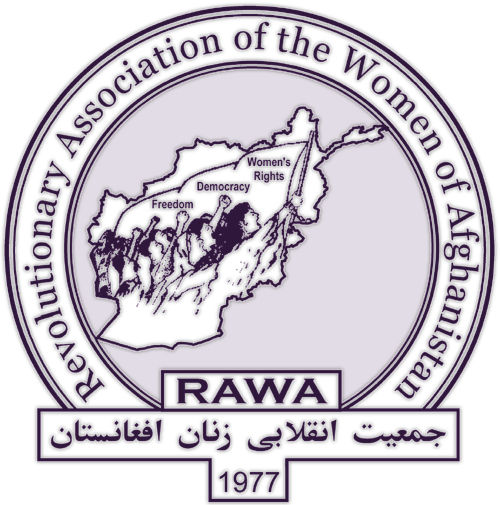Nepal
Nepal: youth uprising brings down government
Protests in Nepal turned violent Sept. 8, as security forces opened fire on demonstrators, resulting in at least 19 deaths and over 400 injuries. Young activists had been taking to the streets to voice their frustrations over government corruption and a recently imposed social media ban. The repression only enflamed the situation, and Prime Minister KP Sharma Oli resigned from his post the next day. His resignation marks the end of a political career with the Communist Party of Nepal (Unified Marxist–Leninist) that saw him hold office from 2015-2016, 2018–2021, and again from July 2024 until his exit this week.
Podcast: Meanwhile, the planet is dying....
Two landmark rulings on the urgent responsibility of states to address the climate crisis are issued—by the Inter-American Court of Human Rights in a proceeding brought by Chile and Colombia, and by the World Court in a proceeding brought by the threatened Pacific Island nation of Vanuatu. Meanwhile in the USA, the Trump regime withdraws from the Paris Agreement, removes greenhouse gases from EPA oversight, drops subsidies for solar energy—and even destroys NASA's climate-monitoring satellites! This as receding Arctic ice sheets and sea ice begin to destabilize the climate-regulating Atlantic Meridional Overturning Circulation (AMOC), melting glaciers unleash deluges from the Swiss Alps to the Himalayas of Nepal, wildfires rage from Canada to California to the Mediterranean, and ocean acidification crosses a "planetary boundary" that portends global biosphere collapse. In Episode 290 of the CounterVortex podcast, Bill Weinberg takes an unflinching look at the long odds for humanity's future—even if we manage to avoid nuclear war.
Storms and floods kill hundreds around the globe
Typhoons, storms and flooding have killed hundreds and left millions homeless across four continents in recent days. More than 600 people—mostly in Vietnam and Myanmar—died when Super Typhoon Yagi, one of the strongest typhoons to hit Southeast Asia in decades, tore through the region, triggering landslides. In China, Typhoon Bebinca battered the commercial capital, Shanghai, forcing more than 400,000 people to evacuate. In Europe, at least 23 people died when Storm Boris dumped five times September's average rainfall in a single week. In the United States, parts of North and South Carolina recorded 45 centimeters of rain in 12 hours—a statistic so rare it's considered a once-in-a-thousand-year event. Inevitably, the wild weather has been devastating for more vulnerable countries. In conflict-affected northeastern Nigeria, half of the city of Maiduguri is under water after a local dam overflowed following torrential rains; recently emptied displacement camps are being used to shelter the homeless. In neighboring Chad, meanwhile, flooding has killed more than 340 people in the country's south.
Nepal: monarchist protest rocks Kathmandu
A clash between thousands of monarchist protestors and police took place in Kathmandu, Nepal, Nov.23. Police used tear-gas and water cannons to disperse protestors who chanted slogans in support of the former king, Gyanendra Shah, and attempted to storm a barricade protecting government offices. Monarchist leader and prominent businessman Durga Prasai has allegedly been under house arrest since the protest, and his followers have filed a habeas corpus petition with the Supreme Court for his release.
Himalayan border conflicts escalate
China has mobilized thousands of troops backed up by armored vehicles to a contested area along the border with India in the Himalayas, where troops last month hurled stones at each other across the unmarked boundary known as the Line of Actual Control (LAC). The area in question is in the Galwan River valley between Ladakh, in Indian-administered Kashmir, and Chinese-administered Aksai Chin. Top generals from both sides held talks in Moldo, on the Chinese side, on June 6, but tensions remain high. India charges that Chinese forces are hindering patrols by its troops along the LAC in Ladakh and Sikkim, and refutes Beijing's claim that Indian forces have crossed to the Chinese side. (SCMP, NDTV, NDTV)
Flooding compounds ethnic clashes in South Sudan
Political violence has declined in South Sudan since last year's power-sharing accord, but sporadic ethnic violence persists. The UN peacekeeping mission deployed Nepalese blue helmets this week to Western Lakes State after fighting between the Gak and Manuer communities left 79 people dead and more than 100 injured. "Inter-communal violence continues to have devastating consequences in South Sudan," said James Reynolds, head of delegation for the International Committee of the Red Cross. The new violence comes as almost one million South Sudanese have been affected by flooding that has submerged communities, caused substantial crop losses, and threatened to reverse some of the humanitarian gains made during a year-long ceasefire.
China, India border disputes spark Nepal protests
Nepal over the past weeks has repeatedly seen both anti-India and anti-China protests, concerning charges that both of the country's giant neighbors are claiming pieces of its territory. On Nov. 19, President Xi Jinping was burned in effigy at one protest. Confusingly, nearly all accounts (seemingly drawing from one report by Asian News International in Hindustan Times) placed the protest in "Saptari, Bardiya, Kapilvastu district," but these are actually three different districts, not even bordering each other, and all along the border with India rather than China. (See Wikipedia entries for Saptari, Bardiya and Kapilvastu districts.) This may loan credence to claims that the anti-China protests were fomented by India. A week earlier, protesters in Kathmandu burned a map of India, Al Jazeera reports.
Nepal blasts bid to reboot Maoist insurgency?
Four people were killed and three others injured in three explosions in Kathmandu on May 26, a grim reminder of the Maoist insurgency the shook Nepal for a decade before a 2006 peace agreement. Three were killed at a hairdressing salon; another improvised explosive device went off in a private home, and a third in a brickyard, possibly in transit toward the intended target. A dissident Maoist faction that has remained in arms since the peace agreement claimed credit for the blasts. The Netra Bikram Chand-led "Communist Party of Nepal" had declared a nationwide general strike for the following day. And in fact many businesses and transportation services were shut down, seemingly more due to fear of attack than support for the strike. (Kathmandu Post, Asia News, ANI)















Recent Updates
15 hours 20 min ago
15 hours 45 min ago
16 hours 3 min ago
16 hours 20 min ago
16 hours 46 min ago
1 day 17 hours ago
2 days 14 hours ago
3 days 13 hours ago
3 days 13 hours ago
5 days 14 hours ago